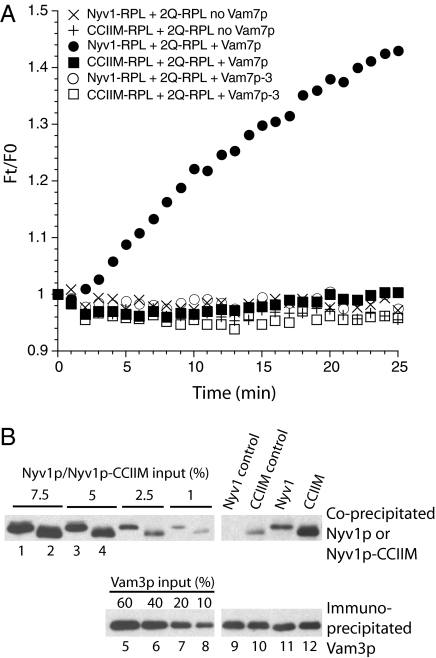Fig. 2.
Nyv1p-CCIIM forms nonfunctional trans-SNARE complexes. (A) R-SNARE RPLs, bearing Nyv1p (circles and X) or Nyv1-CCIIM (squares and +), and 2Q-SNARE RPLs were mixed with either 6 μM Vam7p (closed symbols), 6 μM Vam7p-3Δ (24) to permit trans-SNARE complex assembly while blocking fusion (open symbols), or buffer (X and +). Lipid mixing was measured at 27 °C for 25 min. HOPS is not required for fusion at this level of Vam7p (39). Reaction mixtures without WT Vam7p were transferred to ice and collected for trans-SNARE complex assay. F0, fluorescent signal at 0 min; Ft, fluorescent signal at a given time. (B) Analysis of trans-SNARE complexes. Immediately before the addition of detergent, 6 μM Vam7p-3Δ was added to “control” samples that had not received Vam7p-3Δ (lanes 9 and 10) during the reaction to control for any SNARE complex formation in detergent lysates. Immunoprecipitation was performed with antibodies to Vam3p. Nyv1p that had coimmunoprecipitated with Vam3p was examined by Western blotting. For each primary antibody, regions of the same blot from one gel are shown.

